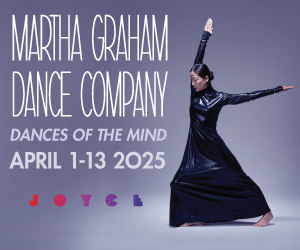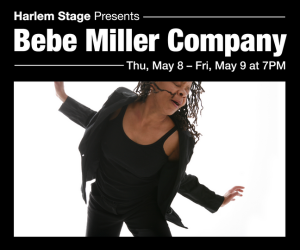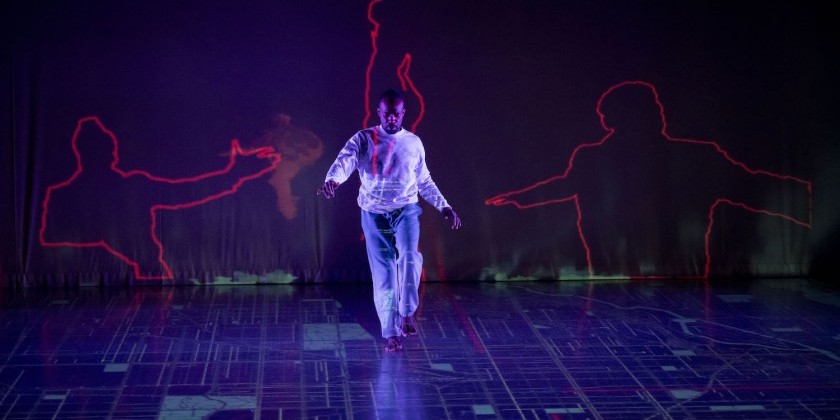DAY IN THE LIFE OF DANCE: Adriana Pierce, Founder & Artistic Director of Queer the Ballet on "Dream of a Common Language"

A Tendu Isn't Gendered
Queer the Ballet presents Dream of a Common Language
Friday, June 21, 2024 @ 7:30 PM
Saturday, June 22, 2024 @ 2:00 PM and 7:30 PM
Sunday, June 23, 2024 @ 3:00 PM
Venue: Baruch Performing Arts Center, with support by CUNY Dance Initiative performance residency grant
Click here for tickets
“You’re at a bar, and each person is sharing a story, and you’re getting them all… it’s kind of like each person shares something, and then someone says, “Oh, it’s interesting you say that,” and builds on it.
It’s kind of like that.”
This is how Adriana Pierce describes a section of virtuosic solos (variations, if you will) that bursts out in the middle of this new evening-length narrative ballet, Dream of a Common Language. The work, choreographed by Pierce, Minnie Lane, Rosie Elliott, and Lenai Alexis Wilkerson, is inspired by lesbian writer and activist Adrienne Rich’s 1978 poetry collection by the same name.
With Queer the Ballet, Pierce and her team are doing revolutionary work, utilizing many recognizable aspects of the ballet structure — like the impressive, flashy, and jam-packed variations that appear out of nowhere in many classical ballets — and breathing into them new life. Storytelling is important in the ballet tradition, and while they could have approached a new narrative work with “girl meets girl, and they fall in love, beginning, middle, and end,” Pierce states, she is more enraptured by uncovering the throughline in Rich’s book of poetry.
“There’s this overarching feeling of building a common language, a commonality of identity, and the idea of community, which I feel can be overwrought sometimes, but it’s truly life and death for the queer community in a lot of ways,” she notes.

Pierce identifies two specific poems, among many, that she cites in this ballet: “Phantasia for Elvira Shatayev” and “Twenty-One Love Poems.” “Phantasia” is based on a true story about a team of women mountain climbers. Pierce describes the beginning of the ballet: “The dancers are climbing a literal mountain and a figurative mountain, helping each other along the way, and relying on each other in community. The stakes are very high. You're in this dangerous climbing situation. But also, the stakes are high when we're claiming space for ourselves and our identities.”
She quoted this line from the poem:
“the women I love lightly flung against the mountain.”
“Twenty-One Love Poems” comes to life in both form and content during the seven-minute section of variations midway through the ballet. Pierce detailed this for me: “In the middle of [“Twenty-One Love Poems”], there's a poem called “The Floating Poem, Unnumbered.” It's different in form… completely different from all the poems around it, and it exists on its own…

Out of nowhere, [the dancers] come in and do these virtuosic solos one after the other, in this very recognizable ballet thing. It's like, ‘oh, they're doing variations.’ But I also have them threading through each other and passing it back and forth, so it's still ours. That's our ‘Floating Poem, Unnumbered.’”
This is what makes Queer the Ballet special — the intertwined, equally weighted commitments to both the ballet form and to claiming queer space within it. These intentions feel deeply related, showing how queering ballet deepens the meaning of its structures. Growing up in ballet school and learning classical variations, I often struggled to connect artistically to the seemingly pointless two-minute solos. But there’s nothing pointless about Rich’s unique poetry formulas, or Pierce’s acutely intentional interpretations. “It’s still ours,” indeed.

“A tendu isn’t gendered,” Pierce stated, towards the end of our conversation.
“We have moments where the dancers are doing their double saut de basques and double tours en l’air… it's like, steps are steps, period. The steps themselves don't qualify gender in any way. I really believe that. Tendu, coupé, pirouette.. all those steps can hold many multitudes of identities. There’s so much to love about ballet. Just get rid of the rest, you know?”
I do — I think many of us do.
















